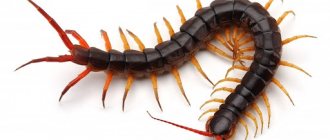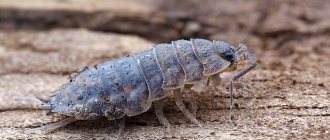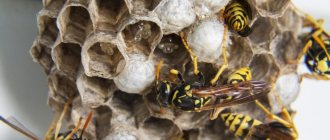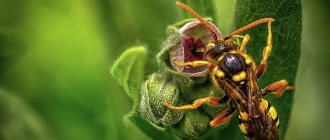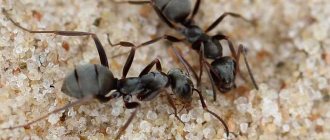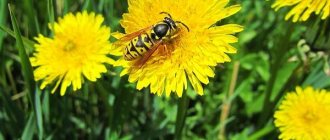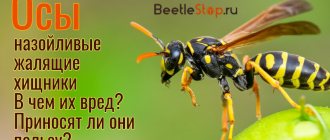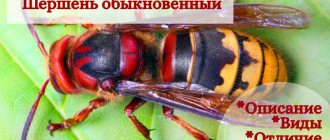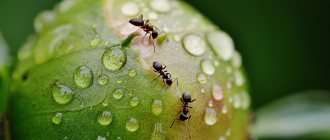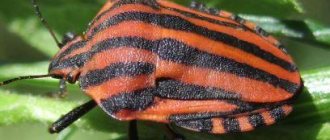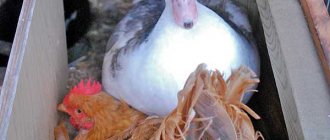Since ancient times, man has learned to use the poisonous biological fluid secreted by land reptiles for his own purposes. Despite the fact that often the secretion of insects and invertebrates, aimed at destroying a potential victim, is deadly, it is often used for medical and cosmetic purposes.
There is still debate about the benefits of wasp stings. By adding a certain amount of poison to medications, a large number of diseases are cured, but do not forget about a possible allergic reaction to it.
Benefit or harm from a wasp sting
There is a difference between honey bees and wasps. Unlike bees, which collect pollen and form a useful, beloved product, wasps are considered predators; their bite causes severe pain to the victim.
The consequences of introducing a sting into the body of a bitten person are much more serious, which can be seen upon visual inspection. The injected wasp venom contains concentrated components that not only repel the victim or enemy, but paralyze it.
At the moment of a sting, the wasp pursues the following goals::
- paralyzing an insect to transfer it to a nest for feeding and feeding offspring;
- protecting one's territory from a large animal or person.
By affecting the nerve endings, after receiving a bite, a person experiences intense pain, which sometimes cannot be compared with trauma to the skin in everyday life.
The main harmful effect of the venom of these insects is the manifestation of an allergic reaction to its components. For allergy sufferers, preparations have been developed based on a purified wasp product, which, when vaccinated, reduces the risk of a dangerous reaction of the body to the bite of a winged predator. Thanks to their composition, antibodies are produced that resist the body's reactions to uncontrolled attacks by individuals.
You can prevent the danger of defeat by your behavior. If you don’t destroy a wasp’s nest or disturb their usual way of life, they rarely attack. If they are disturbed, a whole swarm of winged insects can attack a person.
Moreover, they do not sting once, like bees and bumblebees when provoked, but inflict several bites in one attack, resulting in severe swelling at the site of the bite.
Despite the fact that the composition of the venom is close to that of bees, it is so allergenic that it can provoke anaphylactic shock.
The exact composition of the venom of this insect has not been fully studied; the main components make it possible to highlight the positive aspects of its effect on the human body. Thanks to stimulating, stimulating substances,
wasp venom after special treatment has the following effects on the body:
- activates metabolic processes in the body;
- stimulates the immune system;
- regenerates damaged skin;
- normalizes blood pressure.
Developments are underway to use the poisonous secretion against cancer. Many components of the poison are used not only in medicine, but also in cosmetology. However, it should be understood that independent use of a dangerous substance without special knowledge is dangerous and can lead to adverse consequences.
Carriers of pathogenic bacteria
Everyone knows the love of these insects for sweets, and several individuals crawling over fruit in a vase on a table in a summer gazebo or on the veranda do not bother anyone. While adults are still sometimes able to control themselves and wash a pear or apple before eating, children do not pay attention to such trifles.
By coming into contact with various pests that wasps feed their larvae, as well as with many surfaces, and then sitting on fruits or berries, they are able to carry a sufficient number of pathogenic bacteria on their paws. This applies mainly to pathogenic microorganisms that can cause intestinal parasites or dysentery in humans.
The same applies to the plants they pollinate. By transferring pollen from fire-blight infected trees to healthy ones, they can cause an epidemic that will be difficult to eradicate.
Composition of wasp venom
The components that make up wasp venom have a rapid effect on the nervous system at the cellular level. Important tasks for the body are performed by acetylcholine and serotonin, which are responsible for transmitting nerve impulses to the central nervous system.
By actively affecting nerve endings, wasp venom provokes a sharp reaction of the immune system.
The composition of wasp secretion includes the following components:
- acetylcholine;
- histamines;
- phospholipase;
- hyaluronidase.
The first enzyme causes serious damage to the central nervous system. Exposure to histamine and toxins provokes the activation of inflammatory processes and an allergic reaction. For allergy sufferers, there is a risk of developing urticaria, fever, and Quincke's edema.
Under the influence of phospholipids, healthy cells are destroyed, which causes severe pain and inflammatory processes, manifested by swelling at the bite sites. Hyaluronidase has similar toxic properties.
Effect on the body
Norepinephrine slows down the circulatory system, which prevents the rapid dilution of the toxic substance and washing of the affected area. The main danger is that the bitten person does not know what reaction to the toxic substances will occur.
If you do not treat the affected area of skin in time, you may notice a characteristic reaction.:
- a white tubercle with a red dot in the center forms at the puncture site;
- during the action of toxic substances, a burning pain is felt;
- after a poisonous wasp bite, the skin turns red, inflamed, and thickens.
To prevent dangerous consequences, the place where the sting was inserted must be quickly processed. In addition to washing, it is advisable to take antihistamines so that the wasp venom is diluted and reduces its harmful effects.
The effect of the poisonous secretion depends on the individual characteristics of the victim. Therefore, if it is unknown whether he is allergic to the components of the wasp secretion, he should be taken to a medical facility as soon as possible.
Where do wasps live, what do they build their nests from?
Wasps are not picky about their choice of place of residence. They can build a nest in a barn, on a balcony, under the canopy of a house, or in trees. You can meet wasps in parks. Wasps build nests wherever they can; even on a small stone a nest can grow that can accommodate about a thousand individuals. Wasps can build nests in the ground.
Important: It is often said that wasps were the first inventors of paper. They make their nests out of paper.
How does this happen? Wasps gnaw at the wood and chew it. Thanks to special enzymes in saliva, the wood is crushed and turned into paper. For this reason, social wasps are called paper wasps. This is what a wasp's nest looks like.
Hornet's nest under construction
Wasps begin to lay a nest after spring awakening. The “foundation” of the nest is laid by the queen, then a colony of wasps joins the construction. Wasps build their nests very quickly. The queen is located in the very center of the nest. This part of the nest is built by wasps from the strongest wood materials.
Ready wasp nest
A paper wasp's nest serves as a temporary shelter for insects. Wasps live in it in spring and summer. With the onset of cold weather, wasps fly away in search of a place to winter:
- Some of them live in rotten hollows;
- Others hide in the crevices of trees;
- Wasps also use patches of land under fallen leaves as a winter refuge.
Those wasps that remain in a paper nest are doomed to death. A wasp nest can be as large as a walnut, but at its largest it can be as big as a basketball.
Lethal dose from a bite
Since the wasp is capable of stinging up to several times in one attack and calling on relatives for help, the amount of injected poison can lead to irreparable consequences, including anaphylactic shock. Even if a wasp nest is accidentally damaged, a whole swarm of viable individuals will attack the victim.
The body's response depends on the amount of poison entering the bloodstream . The more it is, the higher the risk of death of the victim. If a person is prone to allergic reactions, one bite from an adult is enough to cause death. The reaction depends on the individual characteristics of the body and the level of functioning of the immune system.
Application in medicine
Despite the fact that no benefit has been identified from a wasp sting, its venom is widely used in modern medicine. The dangerous secretion of hymenoptera insects is used to make vaccines against their bites for people prone to allergic reactions.
The most dangerous time of year for attacks by flying predators is spring. During this period, allergy sufferers are recommended to be vaccinated in advance to prevent dangerous reactions of the body to insect venom.
After taking the vaccine, the body does not react so sharply to bites, which allows you to maintain a normal state in the event of an unforeseen situation.
The main use of a toxic substance in medical practice:
- treatment of hypertension;
- prevention of varicose veins;
- treatment of joints;
- therapy of skin diseases.
In addition, scientists are conducting experiments and developments in the direction of the poisonous secretion to combat cancer.
The importance of laboratory diagnostics
Modern approaches to the laboratory diagnosis of insect allergies recommend identifying specific IgE to Hymenoptera (2 days after the sting). The Allergopanel study “Insect Poisons” contains 5 allergens, including specific IgE of the most common Hymenoptera in Ukraine:
- honey bees (i1);
- common wasp (i3);
- common hornet (i75);
- paper wasp (i4);
- bromelain (o214).
Bromelain is a substance found in a variety of allergen sources, including insect allergens. Detection of specific IgE to bromelain makes it possible to exclude false positive results to allergens of insect venom.
The biomaterial for the study is blood from a vein.
Modern laboratory methods of allergy diagnostics used in DILA make it possible to accurately determine the presence of sensitization of the body to insect venom, prescribe adequate treatment and prevention.
Application in cosmetology
Some substances that make up wasp venom have antiseptic, bactericidal, anti-inflammatory, and analgesic effects. The components promote skin rejuvenation, smoothing out wrinkles and restoring the natural epithelial layer. Despite the fact that a wasp sting is harmful to humans, the beneficial properties after processing the poison are actively used in cosmetology.
A properly processed composition of the wasp's biological secretion acts like Botox . Being a natural component, it does not have a chemical effect on the skin, due to which wrinkles are effectively eliminated and the skin maintains a fresh, healthy appearance.
In modern cosmetology, many drugs have been developed that have a beneficial effect on the skin. Therefore, wasp venom can have both detrimental and positive effects on the human body.
